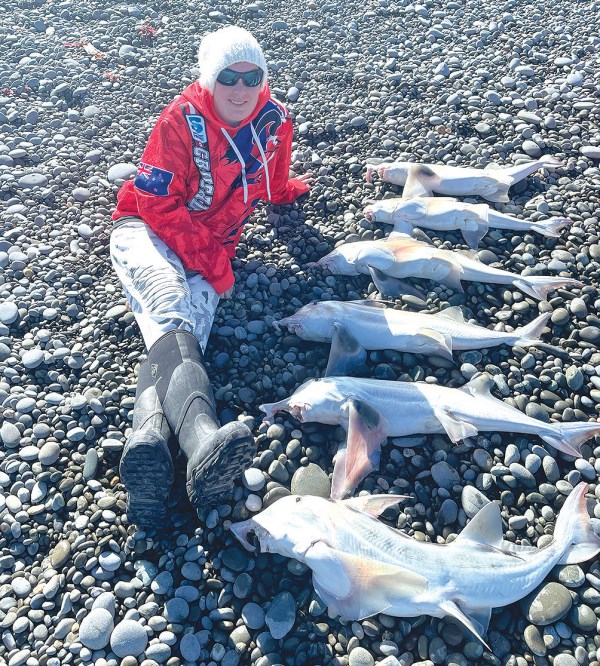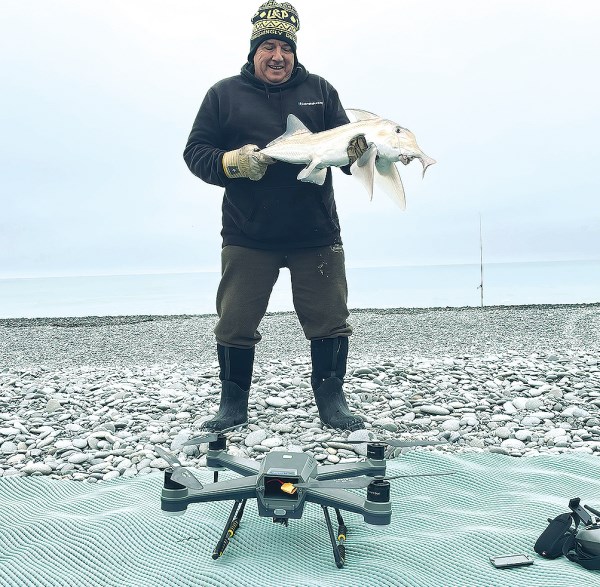
I heard of elephant fish but, until we moved to Waimate four years ago, I’d never seen let alone caught one. What started from fishing at Hook Beach, then Makikihi Beach, soon developed into an evolution process that continues to this day.
Initially, we caught a lot of dogfish, which are prevalent down this way, but they soon disappeared around September and then the ellies turned up. This became a truism: when the doggies disappear, the ellies appear. A neighbour suggested we fish a four hour window, two hours before high tide and two hours after.
I caught my first elly on pāua bait and was hooked. As the season progressed, the influx of elephant fish increased.

Over time, we fished a variety of baits: prawns, mullet, squid… but it was our salted squid that proved number one.
We make our own flasher rigs in a variety of colours, with pink and red the stand out performers. I like to tie long droppers—3 to 4 inches—as these have a better hook up ratio. To this day, my go to combination is squid on a pink flasher.
Fishing regularly, we soon noticed a pattern; the main catches fell between October and February but we caught fish right through to the end of April. Learning your local spots over a year or two is a game breaker—info you can’t buy. You learn when and when not to go, and what spots fish consistently.
Just like salmon or trout fishing, ellies have seasons, runs and feeding spots: armed with that information you start to become successful on a regular basis. We have our share of blank days, but we now have more successful days as a result of experience and first hand knowledge.
If you keep your eyes open, you will find elephant egg cases on the beaches, which are the spots to target, as they come back each year to lay eggs there. Ellies start laying eggs in August and they take nine months to hatch.
We run a fishing page called Dronefish.co.nz We were targeting spots with the surf rods just behind the breakers and others around the 300 to 400 metre mark with the drone. We tried early mornings 4.00 am; it did produce success at times but, to be honest, we did better with high tides mornings to afternoons.
This year has been really different, with the weather having a major impact on the fishing. Normally, we catch 30–40 elephant fish a season, but this year we have only had four! I have a contact who runs a commercial longline boat and even they have had to fish a lot further out to sea this year, so you will have good seasons and bad seasons, but results will come sooner or later. Stick to what you know and don’t give up—if you don’t have a line out, you won’t catch one.













